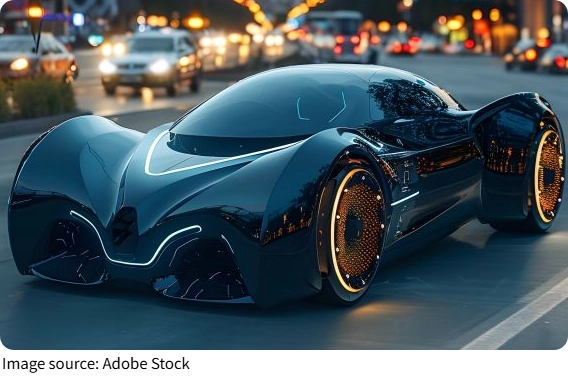Flying Cars Real?

For decades, the idea of flying cars has been a staple of science fiction and futuristic dreams. Movies like Back to the Future and The Jetsons promised us a world where cars would soar over city skylines.
Yet here we are in the 21st century, and most people are still sitting in traffic rather than flying above it. So, are flying cars still just a fantasy—or is reality finally catching up to our imagination?
In this article, we'll explore the current state of flying car technology, the challenges ahead, and whether you might one day park your car in the clouds.
What Exactly Is a Flying Car?
Before we dive into the details, let's clarify what we mean by a "flying car." Generally, it refers to a vehicle that can operate both on the road and in the air. Some designs look like small planes that can be driven on streets; others are more like large drones with seats.
Most modern flying car prototypes fall into two categories:
• VTOLs (Vertical Takeoff and Landing aircraft): These include electric or hybrid vehicles that take off and land vertically like helicopters, requiring no runway.
• Transformative vehicles: These can shift between driving and flying modes, often with foldable wings.
Real Prototypes Taking Flight
Believe it or not, several flying car models have already taken to the skies. Companies across the globe—from the U.S. to Slovakia to Japan—are racing to make this dream a reality.
Some notable examples include:
• Klein Vision AirCar (Slovakia): A dual-mode car-airplane that completed a 35-minute inter-city flight in 2021.
• Joby Aviation (USA): A VTOL aircraft aimed at air taxi services with a range of over 150 miles.
• XPeng AeroHT: A hybrid flying car that has conducted successful test flights.
In 2023, Alef Aeronautics received FAA approval for limited testing of its electric flying car prototype, marking a significant step forward for the U.S. market.
Tech Breakthroughs Making It Possible
The sudden surge in flying car development isn't just a coincidence. Several technological advances are making it increasingly feasible:
• Battery Efficiency: Lightweight, high-capacity batteries are essential for electric flying cars.
• Autonomous Flight Software: Pilotless flying cars will depend on reliable navigation and control systems powered by artificial intelligence.
• Lighter Composite Materials: New materials make vehicles strong but light enough to take off with electric propulsion.
These breakthroughs reduce costs, increase range, and boost the safety of flying car prototypes.
Why Haven't We All Taken Off Yet?
Despite exciting progress, flying cars are not yet part of daily life—and for good reasons. Several major obstacles still stand in the way:
• Safety Concerns: How do we ensure flying cars don't crash into buildings or each other? Aviation safety must be nearly perfect to gain public trust.
• Air Traffic Management: Imagine thousands of flying cars in the sky. Who controls the traffic? Airspace regulation for small, low-altitude flights remains a major challenge.
• Infrastructure Requirements: We'll need "skyports," charging stations, maintenance hubs, and emergency response systems before widespread use is possible.
• Cost: Most current prototypes cost several hundred thousand dollars—far beyond what most consumers can afford.
Urban Air Mobility: The Next Transportation Revolution?
Instead of privately owned flying cars, many companies are targeting the Urban Air Mobility (UAM) market. This refers to short-range, on-demand air transportation services, often in large cities. Imagine ordering a flying taxi through an app and flying across town in minutes.
Companies like Archer Aviation, Volocopter, and Lilium are actively testing air taxi models and collaborating with city planners. Some cities in the U.S. and Europe are already preparing for limited service launches in the next few years.
Environmental Impact and Noise
There's also the question of sustainability. Unlike traditional helicopters or small planes, many flying car projects are electric, which reduces emissions and operating noise. However, the environmental impact of battery production, infrastructure, and air congestion must be carefully considered.
Noise pollution is another hurdle. According to research by NASA, community acceptance will depend heavily on minimizing the noise generated by electric aircraft during takeoff and landing.
Will You Need a Pilot License?
You might be wondering—will everyday people be allowed to fly these cars? The answer depends on how autonomous the technology becomes.
Some vehicles are being developed with full automation in mind, meaning passengers wouldn't need to pilot them. Others will likely require at least a basic level of aviation training until safety systems and regulations mature. Training programs similar to those for drone operators or helicopter pilots might become common.
Are We Close to Mass Adoption?
Mass adoption is still likely 10 to 20 years away. While demonstration flights and early-stage testing are progressing quickly, turning flying cars into a common sight requires government approvals, public trust, and global infrastructure investment.
However, the pieces are coming together:
• Governments are funding advanced air mobility studies.
• Major airlines and automakers are investing in flying car startups.
• Public curiosity is growing, especially in high-traffic regions.
So, while the average commuter won't be flying to work next year, the idea is no longer far-fetched. We're on the runway—and the engine is revving.

Would You Ride One?
Flying cars may still sound like something from a sci-fi movie, but the future is unfolding faster than many expected. With tech giants, aviation companies, and governments aligned on the possibilities, the question isn't "if" anymore—it's "when."
Would you hop into a flying taxi if it promised to cut your commute from 60 minutes to 10? Or do you still see it as too risky or futuristic?
Let us know your thoughts on this soaring topic—would you take to the skies?

 · Vehicle Team
· Vehicle Team